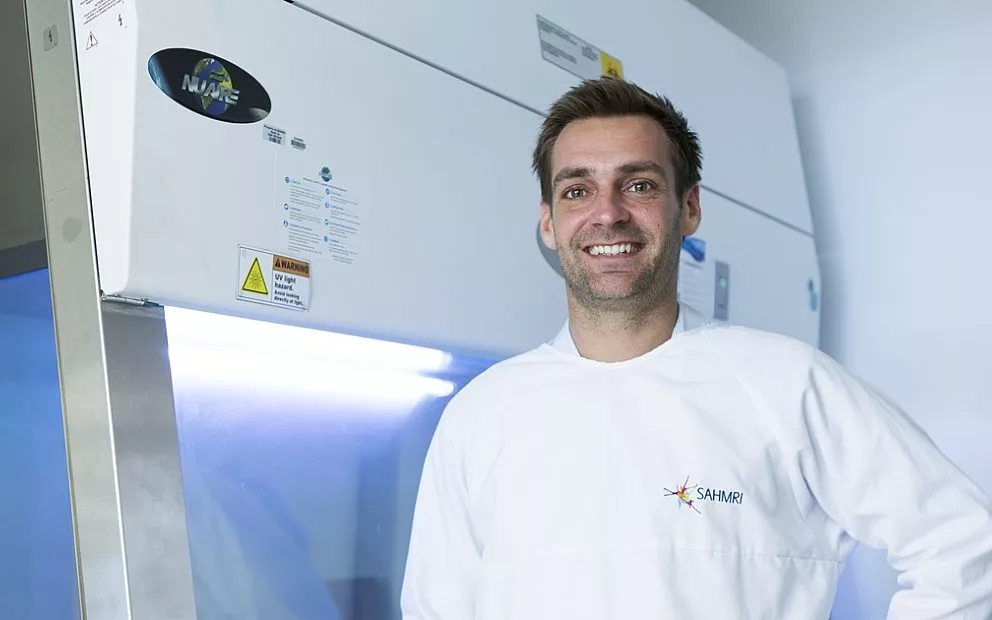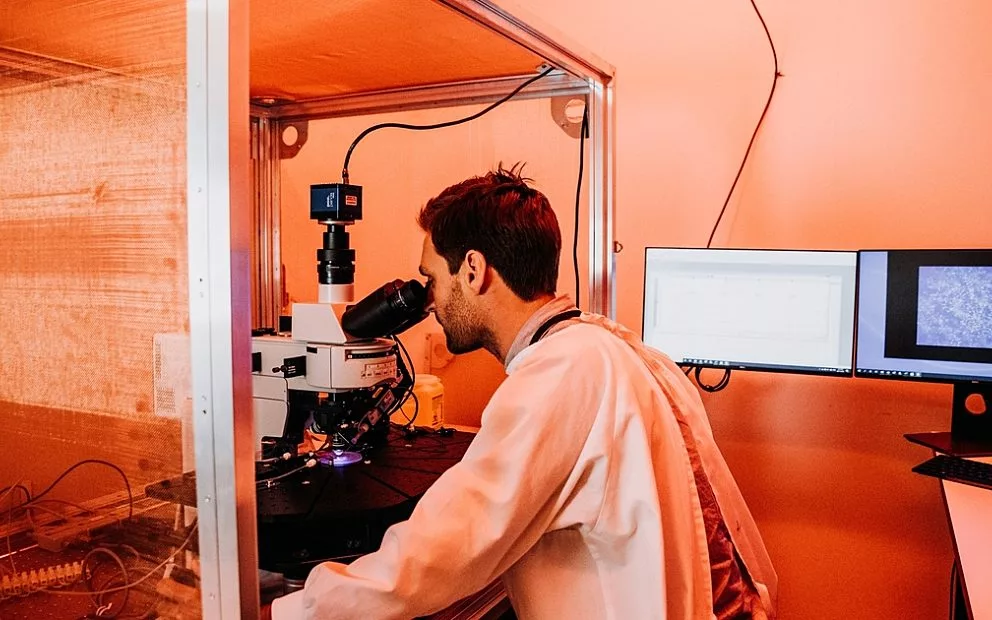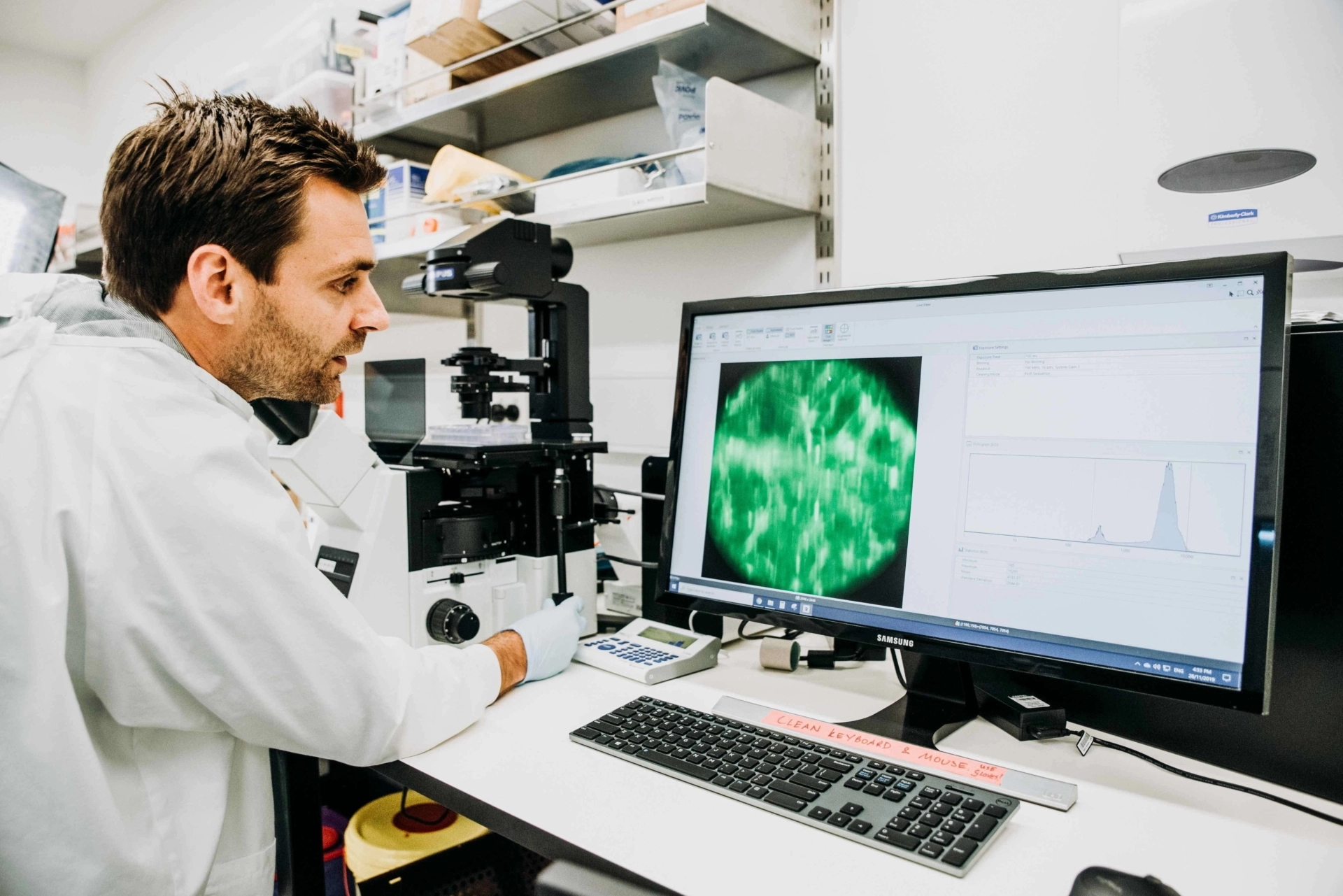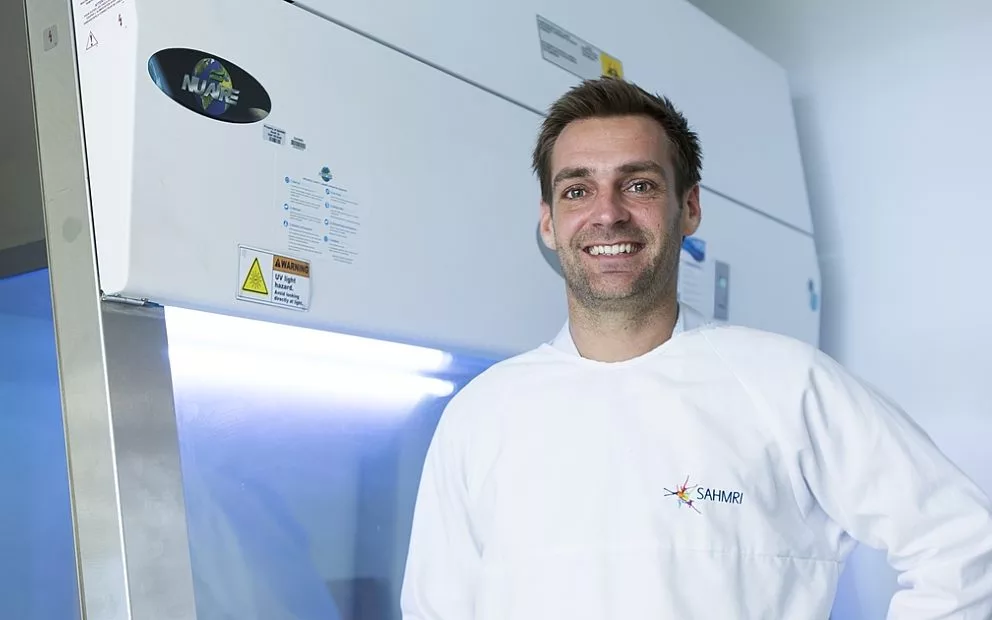Global funding and research collaboration to trial venom in live brain neurons
Preventing the degeneration of neurons in the brain for people living with Parkinson’s is the focus of highly-innovative research being driven by Adelaide neurobiology expert Associate Professor Cedric Bardy, using spider venom on live human brain cells manufactured in the laboratory.
A cure or ways to stop the progression of Parkinson’s is the holy grail of research into the disease. Now, thanks to a global and local funding boost, this holy grail could be one step closer.
Funding bodies The Michael J. Fox Foundation, Shake It Up Australia and The Hospital Research Foundation Group have teamed up to provide the $950,000 grant for A/Prof Bardy and collaborators to progress the work.
Chief investigator A/Prof Bardy, Head of the Laboratory for Human Neurophysiology and Genetics located at SAHMRI and affiliated to Flinders University, is collaborating with teams at Salk Institute for Biological Studies in the United States, Friedrich-Alexander-University of Erlangen-Nürnberg in Germany, The University of Queensland, University of Sydney and University of Melbourne.
The project aims to address the ‘tug of war’ that is experienced by the neurons of people with Parkinson’s, which A/Prof Bardy says are caught between exaggerated electrophysiological demand and low levels of energy available.
“In Parkinson’s disease, fewer dopamine cells are left behind to do the work of thousands of cells that died too early. This in turn stresses those remaining cells and gives them less energy to spend on the business-as-usual activities such as repairing themselves,” A/Prof Bardy says.
“That results in further degradation of the remaining cells, further perpetuating the problem.
“Artificially raising the energy in brain cells is not easy, but what if we could give the cells a break from too much activity? A few hours break each day could be enough to give these brain cells a chance to restore their energy levels and repair themselves from all the extra work.”
This is where natural venoms come in, which have shown to be full of ion channel modulators that could be effective in re-prioritising cellular signaling.
“Our team will test whether the right venom molecule could transiently lower mid-brain dopamine neuron activity, improve cellular repair and make these precious cells last longer,” A/Prof Bardy says.
“We will also be using live human neurons generated in the lab with non-invasive stem cell technologies, to investigate the therapeutic potential of these natural venom-derived molecules to prevent the overload of electrical activity.
“If successful, a therapeutic breakthrough that can slow down neurodegeneration in Parkinson’s disease will change the lives of millions of people worldwide.”
Parkinson’s affects 100,000 Australians and 10 million people worldwide. It is a challenging, incurable, degenerative condition which can be characterised by muscle rigidity and tremors, as well as non-movement symptoms such as pain, sensory and gastrointestinal changes, anxiety and more.
Current Parkinson’s treatments raise the brain’s dopamine neurotransmitter levels or restrict exaggerated electrical activity with deep brain stimulation. However, both of these treatments become ineffective with time and fail to stop the progression of the disease.
Olivia Nassaris, Executive Director of The Hospital Research Foundation Group’s Parkinson’s division which services more than 10,000 clients and their families across South Australia and Northern Territory, says this technology would be a game-changer in Parkinson’s treatment.
“When A/Prof Bardy approached us with the idea of the potential to use natural venom derived molecules we thought it was a crazy idea, but modified toxins are already in use in blood pressure medication,” says Ms Nassaris.
“By isolating and slightly tweaking these components, scientists can use them as the basis for effective new treatments in Parkinson’s which hasn’t been seen in a very long time.”
Clyde Campbell, CEO and founder of Shake It Off Australia who lives with Young Onset Parkinson’s, says the three-year project is highly innovative in its combination of the latest technological advances in electrophysiology and genomic repair.
“Recent breakthroughs to generate patient-derived neuronal culture from induced pluripotent stem cells (iPSC), which A/Prof Bardy’s team has pioneered, provide novel opportunities to gain insight into Parkinson’s and test new therapeutic ideas pre-clinically,” Mr Campbell says.
“Shake It Up Australia Foundation and The Michael J. Fox Foundation are pleased to have formed a funding partnership with The Hospital Research Foundation Group – Parkinson’s to support this cutting-edge research project in Australia.”
Todd Sherer, Executive Vice President, Research Strategy of The Michael J. Fox Foundation, is excited by the research.
“The project will reveal the underlying mechanisms of exaggerated electrical activity in Parkinson’s patients’ midbrain neurons, shed light on new druggable pathways and test innovative natural neuropeptides to raise the energy levels depleted in PD neurons,” says Mr Sherer.
“Overall, the outcomes will determine the disease-modifying merits of electropharmaceutics in Parkinson’s and pave the way for clinical trials. Slowing Parkinson’s progression will have life-changing benefits for millions of people affected globally.”
Release originally supplied by The Hospital Research Foundation





